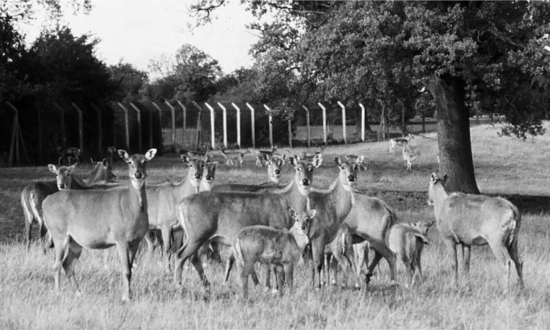Chapter 51 Gastrointestinal Nematodiasis in Hoofstock
Species of perissodactylid and artiodactylid ungulates evolved to take advantage of the grasses, shrubs, trees, roots, tubers, and fruits on and below the surface of the land. Similarly, nematode parasites evolved to take advantage of the mucosal surfaces of the ungulates’ gastrointestinal (GI) tracts, to maximize the chances of their eggs and larvae surviving outside the host and infecting a new host.
BACKGROUND
All hoofstock, especially those with access to grass enclosures, should be assumed to carry a range of GI nematodes. The extent of the infestation, the species of nematodes involved, and the clinical significance should be assessed for each host species.6,7,12
CLINICAL PRESENTATION
Primary Disease
In many cases, more than one species of nematode may be found, or nematodes and other parasites are found together, and it may be impossible to decide which species is the main pathogen. For example, a mixed infection with a Trichuris sp. and several Eimeria coccidial spp. was thought to be responsible for diarrhea in a 10-day-old red lechwe calf (Kobus leche leche).3
Secondary Disease Factors
Malnutrition
The intake of vitamins and minerals is important for the general health of any animal, but among hoofstock, copper deficiency may be particularly relevant. At Whipsnade Zoo, London, yak with low blood copper concentrations were found to harbor significant nematode burdens despite regular deworming.4
Browsing herbivores ingest plant tannins, which are thought to play a role in suppressing nematode infections. The effect has been also been shown in domestic sheep.1
Stress
Besides initiating type II ostertagiasis, as previously mentioned, stress also has a general effect on immune status. What constitutes a stressor will vary between species and individuals and may not always be apparent. Overcrowding is likely to be apparent, but even when the enclosure density is adequate, the makeup and dynamics of the group may be stressful. For example, leaving more than one adult male of certain species with a group of females may or may not result in overt aggression and fighting, but in either case may result in heightened stress in the group, males and females alike. Thus, chronic GI parasitism in Thomson’s gazelles (Gazella thomsonii) at Whipsnade was controlled better by removing all except for one male than by regular anthelmintic treatments.9
Physiologic State
Growth, pregnancy, and lactation all require increased energy and protein intake. Therefore, growing animals and pregnant or lactating females are more likely to be affected by heavy parasitism than adult males and nonbreeding females.
DIAGNOSTIC INVESTIGATIONS
Clinical Examination
Clinical examination may be more difficult for many large ungulates and those in herds. However, some collections have physical restraint systems that allow close inspection, sample taking, and treatment of deer and antelope. If these are not available, examiners should still be able to observe herds at feeding sites (Figure 51-1) and then select a few individuals to assess while under chemical restraint.
Stay updated, free articles. Join our Telegram channel

Full access? Get Clinical Tree



